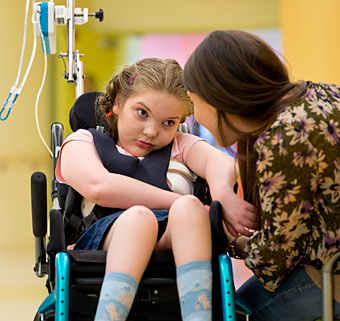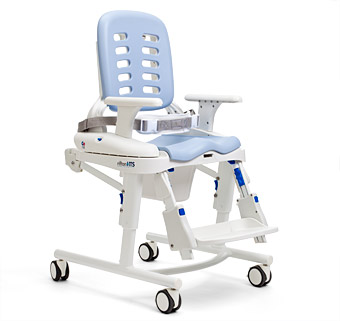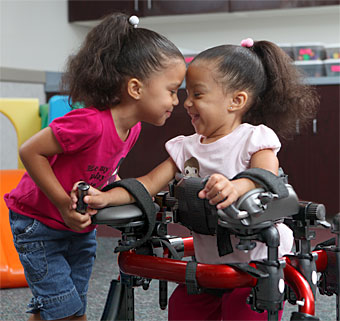Considerations for Medical Equipment in a Pediatric Life Care Plan
| October 2014Factors In Choosing Medical Equipment
 The client's diagnosis and overall medical assessment is the predominant factor in choosing the correct medical equipment for any life care plan.
The client's diagnosis and overall medical assessment is the predominant factor in choosing the correct medical equipment for any life care plan.
The diagnosis will also indicate the progression of medical equipment needed. For example, needs will differ from a case where the diagnosis is a permanent disability with few changes in physical function anticipated after an initial healing period, compared to a case where a child has a progressive disorder that will necessitate major changes in equipment as the child's condition deteriorates.
The individual child's overall physical function must then be noted as a second factor in equipment choices. By properly evaluating a child's functional limitations, the life care planner can assess what assistive technology equipment is needed to compensate for this lack of function. Orthopedic and neurological reports, as well as written observations and progress notes by the child's physical, occupational, and speech therapists, should all be taken into account. Range of motion, muscle tone patterns, and cognitive and behavioral status are factors that will relate to the child's overall physical functional limits.
When considering equipment for children, other factors start to come into play that are not necessarily the same as those considered in an adult plan. The most important of these factors are the following:
- Growth
- Activity level
- Changes in physical and/or cognitive function due to therapies and aging
Growth
Children will grow. Most of the pediatric rehabilitation equipment on the market takes physical growth into account, but growth accommodations are limited both in terms of how the equipment is engineered and in its ability to handle overall wear and tear. All pediatric medical equipment is built with some growth adjustment ranges, usually about 4 to 6 inches of overall growth as a maximum adjustment. The next size model is needed after this level of growth is reached. The life care plan should account for this. When considering new equipment, all competent RTSs or ATSs (i.e., certified equipment suppliers) will try to balance the maximum growth potential with maximum functionality for the child.
Changes Due to Age and Activity Level
As previously noted, required equipment will change as an individual ages. A child's activity level on a daily and weekly basis may be far different than that of adults with the same physical limitations. Primarily due to educational mandates, almost all children (unless they are too medically frail) will attend an educational facility. In most cases, this will mean daily bus transportation and moving through hallways, gymnasiums, playgrounds and on sidewalks. Lifestyle changes will occur as these children age, and it is hoped that they will have more social interaction as with other children. The ability to travel may be enhanced with proper accommodation to cars and vans, and now more wheelchair-mobile teenagers are even traveling by air. Because a life care plan reflects a client's needs over the entire life span, the nature of the client's activities must be reevaluated later in life to identify all changes, especially for those clients having a daily vocation.
Changes in Physical or Cognitive Function
As previously noted, the diagnosis will tell a life care planner much about the initial equipment that a client may need. The long-term effects of the diagnosis must be taken into account to project future equipment changes. Children who attend school may receive weekly therapy. As such, the life care planner should be alert to a potential increase in function secondary to ongoing therapy. The use of assistive technology in mobility, communication, and daily living may be appropriate as new skills are developed.
Types of equipment to consider include:
- Wheelchair mobility
- Bathroom and bedroom safety equipment
- Therapeutic equipment
- Aids for daily living
- Recreational equipment
- Augmentative communication and environmental controls
- Computer interface and vocational accommodations

Bathroom Safety Equipment
Bathroom safety must be considered when evaluating even the youngest clients. Children who are medically fragile must be protected in the confines of a bathtub or when being toilet trained. This is especially true if they are ventilator dependent or have a seizure disorder. Caregiver safety in transferring them is no less important.
A therapist can assess bathroom equipment to ensure proper positioning regarding any limited range of motion, tonal, or behavioral issues. Standard bathroom safety tub chairs may be adequate for young adults with good trunk balance. Wheeled shower-commode chairs or bath seats can provide more support for some clients.
Therapeutic Equipment: Standing Therapy
Standing therapy provides many benefits for children who are orthopedically stable. An article by the manufacturers of Lifestand standing wheelchairs summarized 35 research studies and noted some of the passive standing benefits to include:
- Preventing or reversing osteoporosis
- Preventing contractures and improving joint range of motion
- Reducing spasticity
- Improving renal function, drainage of the urinary tract, and reduction in urinary calculi leading to infections
- Preventing pressure sores
- Improving circulation
- Improving bowel function
(Stewart, T. The Physiological Aspects of Immobilization and Beneficial Effects on Passive Standing, 1992 www.lifestandusa.com)
Standing frames for children come in three types: supine, prone, and upright standers. The child's therapist can determine which type of stander is best. Children lacking substantial trunk and extremity control will probably need the supine stander until better tone and control are achieved. The prone standers are an excellent means of improving a child's head and upper extremity control, while the upright standers require the most full-body control. Manufacturers offer a wide variety of standers. Some units are better for facilities than for home use, and they all vary in their growth adjustment.
Recreational Equipment
Children have an actual physical need to play. Child psychologist Bruno Bettelheim noted that play gives children a "sense of well-being, that is a direct result of feeling in control of things; in contrast to the rest of their lives, which are managed by parents or other adults." (Bettelheim, B, A Good Enough Parent, Knopf, New York, 1987.) For physically challenged children, play is even more important, because their opportunities for socialization are limited much of the time. A wide choice of recreation equipment is now designed for children who are wheelchair dependent. Modified tricycles and bicycles are a growing market for physically challenged children. Most are engineered with positioning systems built into the frame to help stabilize the child's lack of trunk control and increase safety.
Conclusion
Equipment considerations for pediatric clients will be generally more complex than for an adult with similar catastrophic injuries or diagnoses because of additional age and growth factors. Certain equipment, such as car seats, vestibular bolsters, and positioning chairs are usually relegated to pediatrics at an early age then discontinued, while other items such as gait trainers or strollers may be required with the child's first onset of injury but are later changed to adult walkers or wheelchairs. The life care planner must put considerable thought into the changing equipment needs. Unlike other pediatric medical services that may alter with age, assistive technology equipment will be a growing and changing need as body function and environment change through life. Technology itself complicates this process. The equipment being prescribed for the pediatric client today has dramatically changed from what was available for the same child even 10 years ago. Engineering, electronic, computerized simulation, and miniaturization enhancements have altered functions not available in the past. This trend is likely to continue, making the life care planner's projections for assistive technology equipment a continued challenge. When pediatric clients' needs grow more complex, the life care planner should not hesitate to seek guidance from a credentialed specialist.
Reprinted with permission from Pediatric Life Care Planning and Case Management, Taylor and Francis Group, Boca Raton, FL 2004
By Susan Riddick Grisham, Life Care Manager http://www.careplanners.net/

